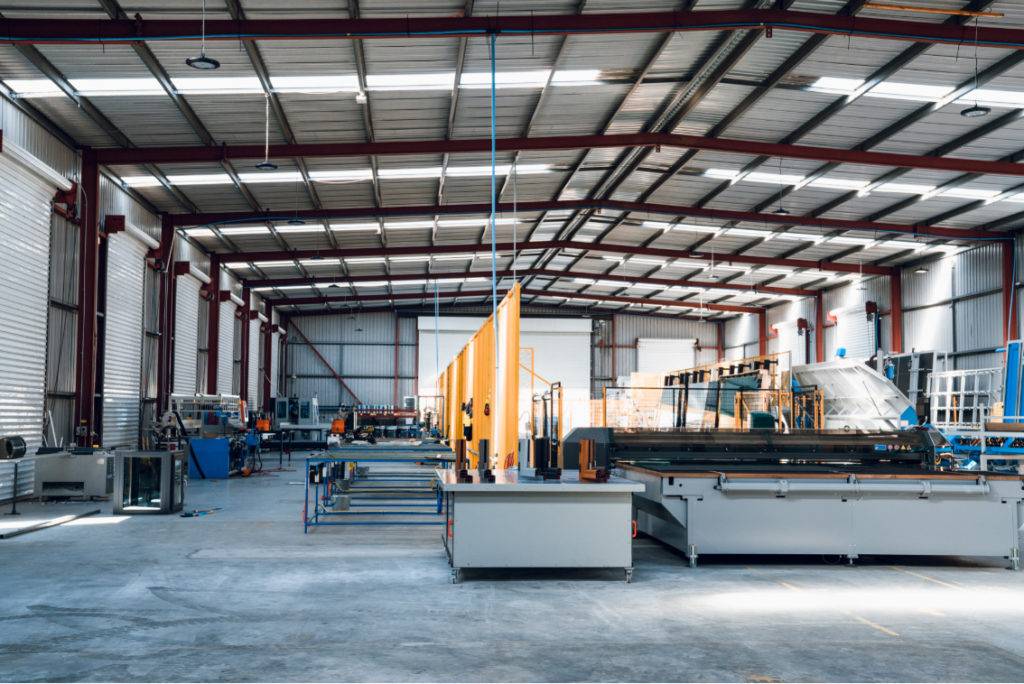How are double glazed windows made?

Double glazed windows are one of the great innovations in building sustainability and security. Widely attributed as an invention of Victorian-era Scotland, double glazing (plus triple, and now even quadruple glazing) is characterised by multiple glass panes with a hermetically sealed layer of air or gas.
Most people know double glazing has benefits for energy efficiency, security, noise reduction and heat transfer. But how is double glazing made, and what separates high quality double glazed windows from cheap-and-nasty alternatives?
How double glazing is made
Double glazed windows have three layers sealed together in a single unit: an external glass pane, air gap, and internal glass pane.
Joins are closed with sealant and the window clad in a weather-resistant airtight uPVC frame. Energy – heat and sound – cannot pass through these layers as efficiently as single pane windows.
External pane
The first line of defence against UV rays, heat, cold air, rain, wind and noise. We use a special Low-E (low emissivity) coating on the inside of the external pane to limit UV exposure by 75% and reflect warmth, keeping your home at a comfortable temperature all year.
Air gap
The unique element to double glazed windows. Air or argon gas is trapped between the two glass panes to create an insulating layer with the additional benefit of acting as a sound barrier. We use an air layer to offer affordable, high performing double glazed windows that outperform Australian standards. We also pack the base of the frame with a moisture-absorbing desiccant to prevent condensation.
Internal pane
Finally, a clear internal pane completes the hermetic air seal and provides unobstructed views. This pane, combined with the air gap, helps trap air inside the house to reduce reliance on heating and cooling appliances.
Double glazed windows only offer the full range of benefits when they are made to measure and installed millimetre-perfect to create a full seal.
What to look for in double glazed windows
Glass type
Low-E coating makes glass more energy efficient and reflects up to 75% of the sun’s UV rays
Toughened glass is treated to be 5 times stronger than regular glass
Laminated glass is even tougher, earning a Grade A Safety Glass rating
Toned glass uses an additive during manufacturing to obscure the glass for privacy
Gap size
An air gap between 12mm and 20mm offers effective insulation
Air can be replaced with argon, xenon, or krypton (although this normally increases cost)
Some budget suppliers use 6mm to 12mm gaps which are not thermally efficient
Frame material
The most common window frames are aluminium, uPVC and timber
Even treated timber can warp or crack in extreme weather or coastal conditions
Aluminium is less energy efficient than uPVC because it has high conductivity
uPVC (un-plasticised Polyvinyl Chloride) is the best choice for insulation, lightness, and aesthetics
Locking mechanism
Windows are a common target for home invaders
Avoid single-point locks as these are easy to break
Multi-point locking systems create an effective barrier against intruders
ARCO Double Glazing manufacture and install double glazed windows and doors to keep Perth homes and businesses secure, reduce energy bills, and increase year-round comfort. We use the highest quality European glass with energy-efficient Low-E coating as standard, and can custom make the windows to suit your preference.
Get an instant estimate on double glazed windows through our website today and enjoy the benefits for less than you might think.
Get a free online quote
Use our simple online calculator to receive an instant estimation for your project. Please note the instant estimate is for white frames and doesn't include installation or accessories. Prices are subject to change.